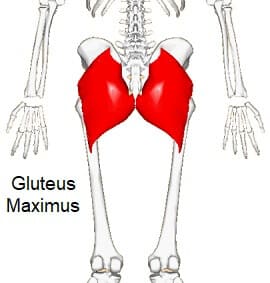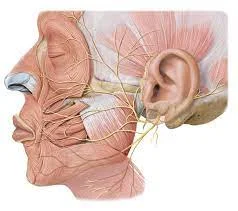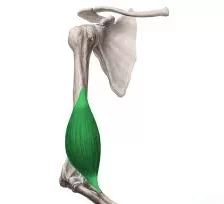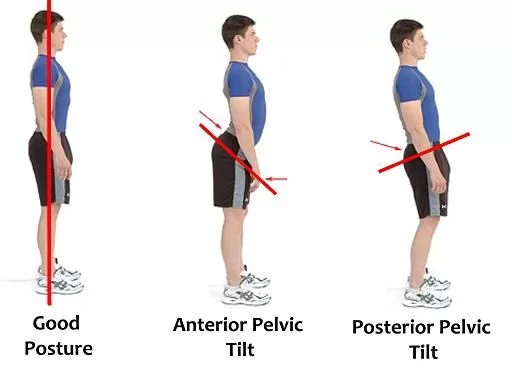How Long Does the ACL Injury take to heal?
ACL Injury healing process depends upon the severity of the injury and how you are taking enough rest with pain medication and following the Doctor’s guidelines.
In this article, we discuss the grade-wise recovery pattern and treatment protocol for ACL(Anterior Cruciate Ligament) injury that will help you to decide how long your injury will take time to heal.
Table of Contents
How Long Does the ACL Injury take to heal? An overview
- The ligament injury has a mild to severe form.
- According to the severity grading, it will take time to heal.
- so it is decided by your doctor on the following bases:
- Ligament injury healing without surgery
- Ligament injury healing with the help of surgery.
- According to the grade of injury, the duration will be decided.
- Most commonly it is found that It may take 6 weeks to 3 months to heal properly.
Signs and Symptoms of an ACL Injury:
The most common symptoms found are described below:
- The patient is having to complain of severe pain.
- Rapid accumulation of swelling in the surrounding and involved area.
- A popping kind of sensation is felt in the knee at the time of injury.
- Hemarthrosis in the knee joint.
- The patient is not able to continue his or her previous continued activity.
- The patient is not able to affect extremities.
- weight-bearing becomes difficult.
Causes of an Anterior Cruciate Ligament injury:
- Sports that required Suddenly slowing down and direction changes activities.
- Landing on uneven surfaces from jumping activities.
- Stopping suddenly
- Direct blow to the knee joint.
What is the Mechanism of injury?
- ACL Injuries can occur from two types of mechanisms:
- Contact mechanism and Non-contact mechanism
- both are described below in detail:
- The common contact mechanism is a direct blow to the lateral side of the knee resulting in a valgus force to the knee.
- and The non-contact mechanism is a rotational mechanism in which the tibia is externally rotated on plated foot.
How to do a Diagnosis of an Anterior Cruciate Ligament injury?
- It is done in two ways:
- (1) By clinical examination
- (2) By Investigations suggested by your doctor
- The Diagnosis can be made on the basis of clinical examination but you may need further investigations to determine the severity of the injury. so both are described below in detail.
- Clinical Examination of an Anterior Cruciate Ligament Injury:
- It is done by your doctor after an Anterior Cruciate Ligament injury.
- Your Tibial bone becomes anteriorly lax relative to your femur bone.
- So assessment and examination are done by Special tests related to Anterior Cruciate Ligament.
- It is done by Two special tests:
- Anterior Drawer Test
- Lachman Test
- Both the special tests are described below in detail:
- Anterior Drawer Test:
- Patient position:
- Supine lying With Flexion of the knee at 90 degrees and hip at 45 degrees, with foot flat over couch or plinth.
- The procedure of the Test:
- Place both hands behind the knee joint and thumb over the anterior knee joint line.
- Pull the proximal part of the patient’s leg anteriorly.
- so the drawer of 6 to 8 mm is considered a positive test.
- The examiner will also feel the anterior translation of bone.
- Lachman Test:
- Patient position:
- Supine lying with the knee flexed up to 20 degrees to 30 degrees.
- The procedure of the Test:
- Place one hand over the distal femur and with another handgrip the proximal part of the tibial surface and put your thumb on the anteromedial joint margin.
- Now pull the proximal part of the patient’s leg anteriorly.
- So anterior translation of bone with soft end feel is considered a positive test.
- Investigations for an Anterior Cruciate Ligament Injury.
- X-ray:
- it is important to rule out any fracture related to the knee joint.
- but soft tissue injuries can not be diagnosed with an x-ray.
- Magnetic Resonance Imaging(MRI):
- it will show the extent level of an ACL injury.
- it will also show structural damage to other surrounding tissues.
What are the Grades of the severity of an Anterior Cruciate Ligament injury?
- It is described here in detail:
- The Grades are divided into three types:
- Grade-1:
- The mild injury causes only micro-tears in the ligament.
- because of micro-tears, there will be ligament stretch.
- but the instability is not seen.
- Grade-2:
- Moderate injury in which ACL is partially torn and more stretched.
- some amount of instability is seen.
- weight-bearing becomes difficult.
- Grade-3:
- A severe injury in which the ligament is completely torn or fully stretched.
- the knee joint becomes totally unstable.
- weight-bearing is not possible for the patient.
What will be the treatment plan and how much duration will be required for the healing of an injured Anterior Cruciate Ligament?
The different grades of ACL tear have different types of prognoses:
- if you are diagnosed with Grade-1 Tear of ACL then you need to follow the below treatment plan for the healing of an injury.
- Here, your joint function will resume quickly.
- so you are just required to use the PRICE Principle (Protection, rest, ice, compression, and elevation) to control pain and swelling.
- And you also required Physiotherapy treatment to regain your normal activities of daily living.
- you will be recovered within a few days to a month.
- If you are diagnosed with Grade-2 Tear of ACL then you need to follow the below treatment plan for the healing of an injury.
- Here, your ACL has a partial tear.
- so your knee joint has lost its normal functions.
- so it may delay your recovery time.
- you need a Physiotherapy treatment plan to regain your normal activities of daily living, but rehabilitation and recovery will happen within 3 months without surgical intervention.
- but in some partial tears, you may require a surgical procedure.
- If you are diagnosed with Grade-3 Tear of the ACL then you need to follow the below treatment plan for the healing of an injury.
- Here, your ACL has a complete tear.
- so you cannot perform any kind of function with your affected knee.
- so without surgical interventions, you will not get the proper healing.
- So after surgical reconstruction of your ligament, you also required post-operative physiotherapy treatment to regain your normal activities.
- It would take up to 9 months to a year to become functionally active as before.
How Long Does the ACL Injury take to heal?
The healing time for an ACL (Anterior Cruciate Ligament) injury can vary depending on the severity of the injury, the individual’s age, overall health, and the chosen treatment approach. Generally, the healing process involves several stages:
- Acute phase (0-2 weeks): This phase involves managing pain, swelling, and inflammation. Rest, ice, compression, and elevation (RICE) are commonly recommended during this period.
- Recovery phase (2-6 weeks): During this phase, the swelling and acute pain should start to subside. The focus is on regaining range of motion, reducing stiffness, and improving muscle strength around the knee joint.
- Rehabilitation phase (6 weeks to 6 months): This is a critical phase where physical therapy plays a vital role. The individual will work on improving muscle strength, flexibility, balance, and stability. The goal is to restore normal function and prepare for a return to activities.
- Return to activities (6 months or longer): The time frame for returning to sports or high-impact activities can vary. Some individuals may be ready to return around the six-month mark, while others might require more time, even up to a year, to ensure a full recovery.
It’s important to note that not all ACL injuries are treated the same way. For some minor or partial tears, non-surgical treatment options like physical therapy and bracing might be sufficient. However, for more severe ACL tears or injuries involving other structures of the knee, surgical intervention, such as ACL reconstruction, may be necessary.
Always follow the advice and guidance of a qualified healthcare professional, such as an orthopedic surgeon or physical therapist, to determine the most appropriate treatment plan and expected recovery timeline for an ACL injury. They can evaluate the specific case and provide personalized recommendations for a successful recovery.
FAQs
First, non-surgical options are considered; however, if the tear is complete and the knee is unstable or if non-surgical options are unsuccessful in healing the knee, surgery may be required. Since there is no blood supply to the ACL, it cannot repair on its own.
In order for your body to heal faster, you need to get enough rest, stabilize the knee with a brace, and sleep, which helps to lessen pain and swelling. The same goes for eating immediately following ACL surgery so that your body can start the healing process. This involves eating a nutritious diet that is high in protein, vitamins, and minerals and low in simple sweets.
Despite the fact that everyone’s circumstances are unique, you might recover from a partial ACL tear within three months, especially if you receive physical therapy to regain your knee’s strength and functionality.
Full ACL and MCL injuries are dangerous and may limit future movement. In most cases, pain, edema, stiffness, and instability follow MCL or ACL rupture. With a damaged knee ligament, the affected individual can typically continue walking. However, the range of motion will be significantly restricted which will be uncomfortable. So avoid painful walking advisable or you can use a supportive knee brace that helps to stabilize the Knee joint during walking.
Five Ways to Prevent Anterior Cruciate Ligament Injuries and Keep your ACL Ligament strong are:
RegularExercise mainly stretching and Strengthening exercises of Knee muscles
Avoid Jerky Knee movement.
Take enough rest and Avoid Working Out If You’re Too Tired.
Strengthen and Stretches your Core muscles.
Also, improve your Balance which reduces the risk of falls.







